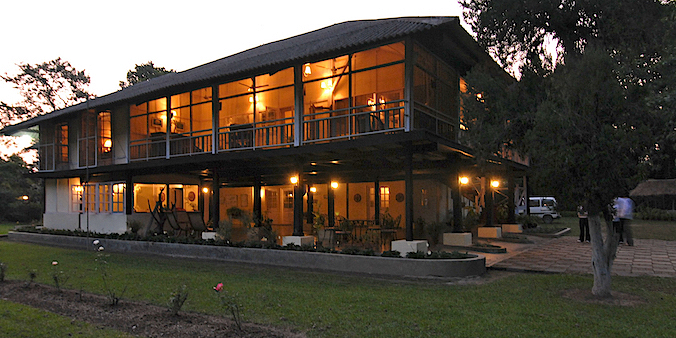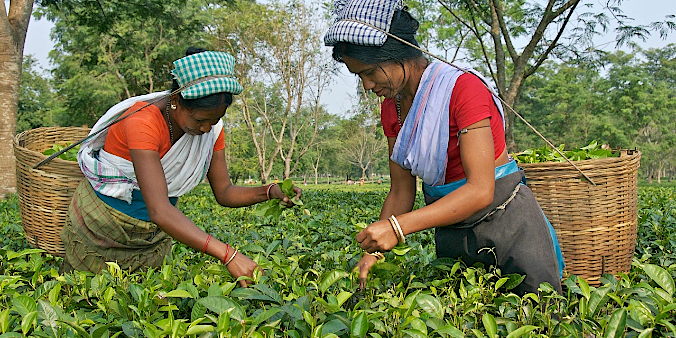Four national parks of Assam
Tour - 14 days
About Assam
Assam is the only state in north-east India that is almost entirely low lying. It consists largely of the flood plains of the Brahmaputra, one of the largest untamed rivers in the world. The climate is fantastic for rice cultivation, all kinds of tropical crops, bamboo cultivation and fish farming.
Assam is relatively densely populated. The legal part of the population consists of at least 35 million people on an area of 78,000 square kilometers (similar to Czechia, a bit smaller than Austria), the illegal part at least 5 million.
Read more…Read less
The name Assam comes from the same origin as Siam, which means Thailand. The larger part of the population finds its roots far to the east, from where their ancestors, the Ahums, entered the area in the 13th century. For more than 600 years the Ahums upheld a kingdom in Assam. Especially in the last two centuries the Assamese culture, language and genetics have changed due to frequent immigration from India, Nepal and later Bangladesh.
Before the Ahums settled in the Brahmaputra Plain, other peoples already lived here. The most important of these are the Bodos, who now live mainly in the north and northwest of Assam (population about 1.5 million).
Wildlife of Assam
P.M.
Region
Assam
(India)
Best Time
Feb/April &
Nov/Dec
No. Of Days
15 days
Trip Character
Jeep tour/
wildlife tour
Sleeping Altitude
65 - 100 m
Price
INR XXX/ $ XXX
ABOUT THIS TOUR
On this trip you will visit one of the least visited parts of India, the Northeast. This region is also one of the most biodiverse areas in the world. It is part of three so-called biodiversity hotspots. Northeast India has vast wildlife parks where the Indian big five can still make their living, but also leafy tea gardens, rustic bamboo villages and the awe-inspiring plains of the Brahmaputra, one of the world’s most untamed great rivers.
Read more…Read less
You will visit Kaziranga N.P., Manas N.P., Nameri N.P. and Dibru-Saikowa N.P. Here, you will find the last large population of Indian (unicorn) rhinos, a vital tiger population and large herds of wild elephants. More difficult to see, but equally present, are the clouded panther and the red panda, species typical of the rainforests of the low Himalayas.
Especially Kaziranga and Dibru-Saikhowa are also a birder’s paradise. Even non-bird watchers will be amazed by the wealth of birds here, including many large, easily observed species, such as the Bengal vulture, Pallas sea eagle, the black-necked stork, pelicans and adjutant storks.
YOUR custom-made TRIP
The tour described here, as well as the other ones on our website, are mainly meant as suggestions. We would be happy to offer you a travel proposal that fully meets your personal demands and expectations. That means that you choose where you want to go, what level of accommodation and type of transport you want and what activities you prefer.
Please let yourself be inspired by this and other trips on our website and then drop us a line (or call us) to explain your travel wishes. We will be happy to help you put together the perfect trip. You can reach us over e-mail, Messenger, Whatsapp or mobile phone.
EXTENSIONS & VARIATIONS
Apart from the tour as described here, you could consider the following add-ons and changes:
- Spend two or three extra days in the area near Nameri and Dirang, visiting Pakke Wildlife Sanctuary, Eagle Nest Wildlife Sanctuary (both very good for birds), as well as visiting nearby Sangti Valley where black-necked cranes spend the winter.
- Spend extra days at Kaziranga National Park, enhancing your chances of seeing the elusive tiger. Kaziranga has 6 different ranges, parts of the park that each have their own character in terms of landscape and chances of seeing different species. So you need 6 days to see them all.
- Spend a few days more at Mancotta Tea estate in Dibrugarh, to fully unwind and relax before returning home.
ITINERARY
-
Day 1: Delhi / Kolkata ✈︎ Guwahati
After an early 2,5 hour flight you arrive in Guwahati, the capital of Assam. On arrival the local guide and driver will receive you. In the afternoon we visit the famous and colorful Kamakhya Temple, dedicated to the Hindu goddess Shakti, as well as Peacock Island, in the middle of the mighty Brahmaputra. Altitude 55m. -
Day 2: Guwahati - Manas National Park (4 h)
Today you will be transferred to Manas N.P. on the way passing through the plains of Assam. At N.P. we check in at a comfortable resort. In the evening we take a walk in along the border of the park. Even from the outside peeking into the park, we can spot deer, wild boars and sometimes even rhinos. Altitude 55 → 85m. -
Day 3 & 4: In Manas N.P.
We have two full days to make up to four safaris. By jeep we will explore some of the more distant parts of Manas. One safari brings us near the border with Bhutan with a good chance to see herds of elephants and the rare golden langur, another safari goes to the eastern section of the park. Of course we are also all the time looking for the many different species of often colourful birds. Another possibility is to take a walk along the banks of the Manas river. Altitude 85m. -
Day 5: Manas N.P. - Nameri N.P. (7-8 h)
A long drive brings us to Nameri N.P. at the foothills of the Himalayas, where we check in to a very pleasant accommodation in the forest near the park. In the evening we take a nature walk on the banks of the nearby Bhorelli River. Altitude 85 → 100m. -
Day 6: In Nameri N.P.
We cross the river and make a bird walk accompanied by a naturalist and a forest ranger. Afternoon rafting on the Borelli River, with a decent chance of seeing the Ibisbill, as well as other waterbirds. Altitude 100m. -
Day 7: Nameri - Kaziranga N.P. (3 - 4 h).
We drive to the famous Kaziranga N.P., where we check in for 3 nights at an attractive resort very near the park. In the afternoon we go inside the park for our first jeep safari, accompanied by a specialized nature guide. Kaziranga is the best place to view the Indian Big Five: Indian rhino, tiger, leopard, buffalo and elephant. Altitude 100 → 85m. -
Day 8 & 9: In Kaziranga N.P.
Again you’ll do two jeep rides, each in different parts of the park. The park has seven different ranges, each with its own landscape and different chances of seeing particular species. Altitude 85m. -
Day 10: Kaziranga - Majuli Island (3 h)
We travel eastward and by ferry we cross the Brahmaputra to quiet Majuli, one of the largest river islands in the world. Overnight is in simple but rustic and clean cottages. Altitude 85 → 65m. -
Day 11: On Majuli Island
Majuli is best known for its Satras. These are kibbutz-like monasteries where Hindu monks who belong to Vaishnavism live. We will witness monks performing dances, which have acquired UNESCO World Heritage status. Majli is also a paradise for water birds, which we will try to see on walks and bicycle rides. Think of spot-billed ducks, whistling ducks, gadwalls, common teals, bronze-winged jacanas, great egrets, white-fronted goose, greylag goose, bar-headed goose and ruddy shelduck. -
Day 12: Majuli - Dibru Saikhowa N.P. (5 h)
We cross back over the Brahmaputra, then continue east. At Sibsagar we visit the famous 16th century Ahum monuments and at the largest Shiva temple of India. Passing the city of Dibrugarh, we reach a simple but rustic ecolodge at the bank of the river at Dibru-Saikhowa N.P. Altitude 65 → 115m. -
Day 13: In Dibru-Saikhowa N.P.
Dibru-Saikowa is a safe haven for many rare and endangered species, including over 300 kinds of birds. We’ll explore the park with a big boat, on foot and floating in small canoes through the marshlands. Early evening, we check in to a very atmospheric tea bungalow in Dibrugarh. Once, this was the home of the tea estate manager, now it is a luxurious hotel. Altitude 115m. -
Day 14: In Dibrugarh
A relaxed day. You can see how tea picking works and/or take a walk on the beach of the majestic Brahmaputra. Or you can visit a small Thai Buddhist village (2 hours driving). The local monks and laymen preserve their original culture very well. Altitude 110m. -
Day 15: Flight Dibrugarh ✈︎ Delhi (45 min drive, 2.5 h flight)
After breakfast you are transferred to the airport for the flight back to Delhi. It depends on the timing of your international flight whether you will need an overnight stay in Delhi. In the latter case we can arrange this for you.
HIGHLIGHTS OF THIS TOUR
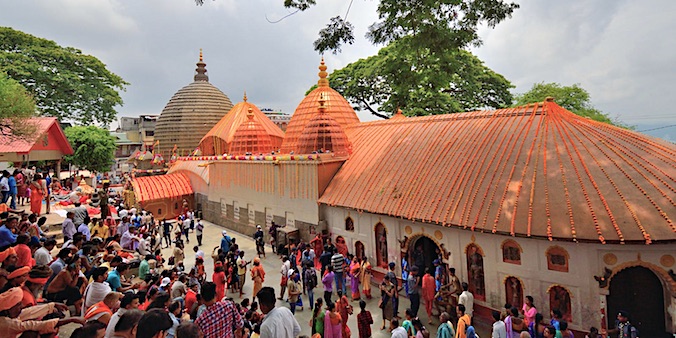
Guwahati
Manas National park
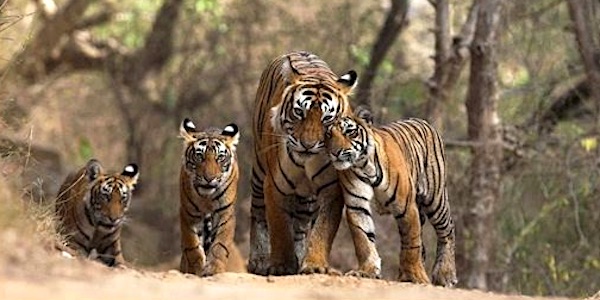
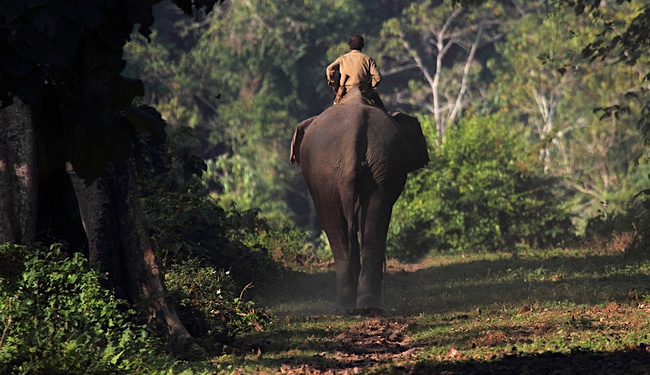
Nameri National park
Kaziranga National Park
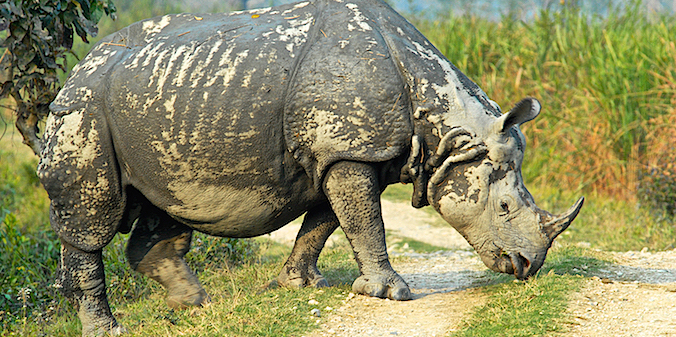
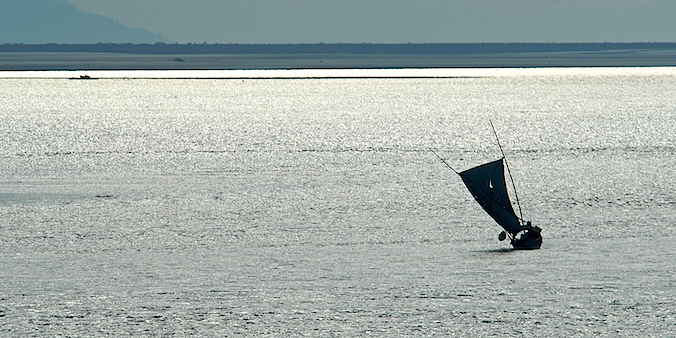
Brahmaputra CROSSING
Satras of Majuli island
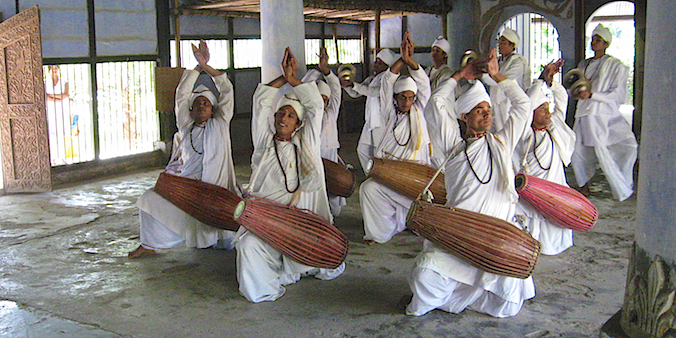
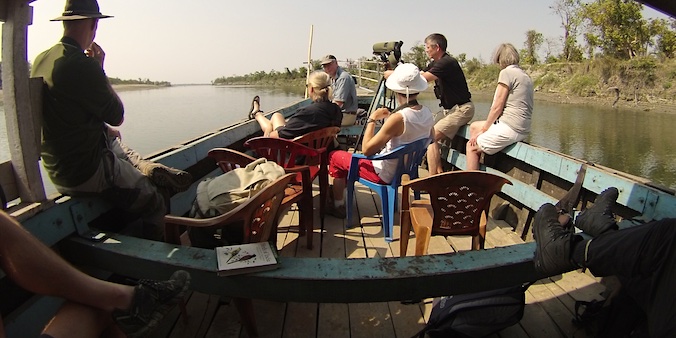
Dibru-Saikhowa National Park
This little visited, but beautiful, park covers part of the Brahmaputra, Dibru River and adjoining wetlands in upper Assam. The land part mainly consists of moist, mixed semi-evergreen and deciduous forests, canebrakes and grasslands. 37 mammal species live here, including the severely threatened Ganges dolphin (a subspecies of the Southasian river dolphin). It shares the waters with 104 kinds of fish. Among the 500-plus birds that live here, noteworthy are greater adjutant, ferruginous pochard, the rare Jerdon’s babbler, black-breasted parrotbill, marsh babbler, puff-throated babbler, Jerdon’s bushchat, rufous-rumped grassbird, chestnut-crowned bush warbler, Sarus crane, Bengal florican, spot-billed pelican, white-necked stork, black stork, black-necked stork, various ducks and egrets, and purple heron.
Mancotta TEA BUNGALOW
